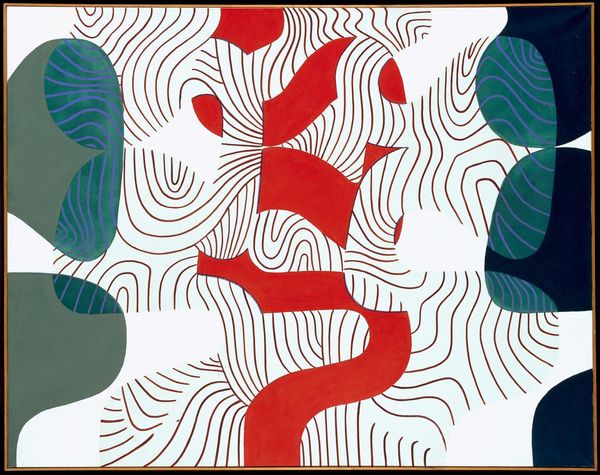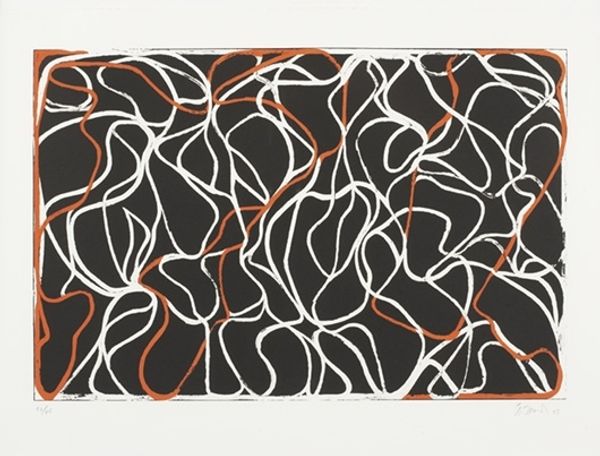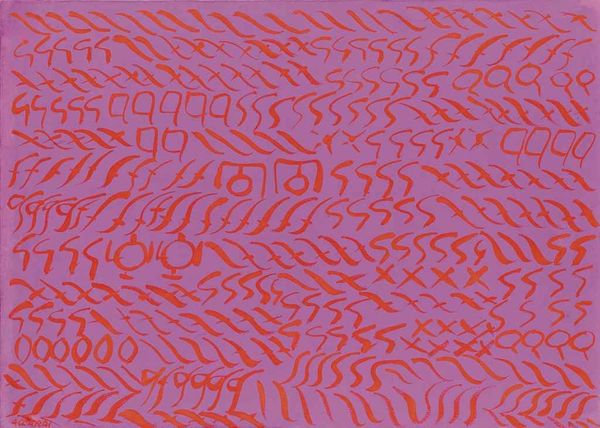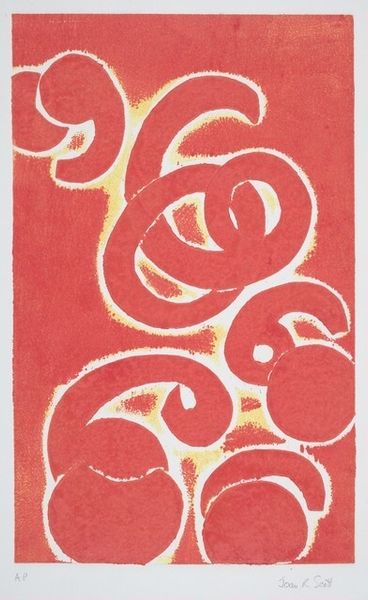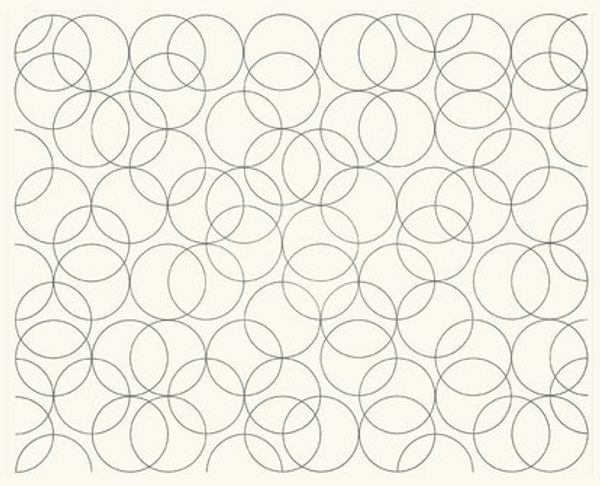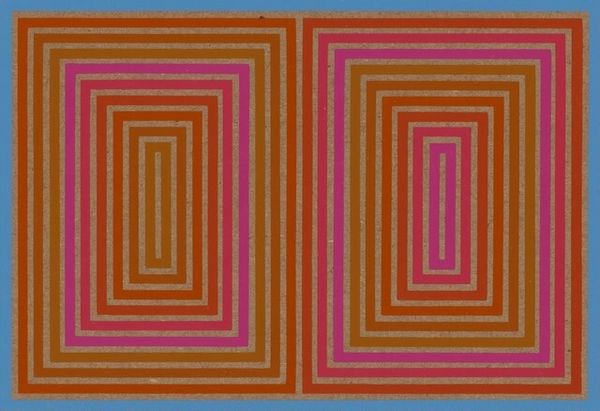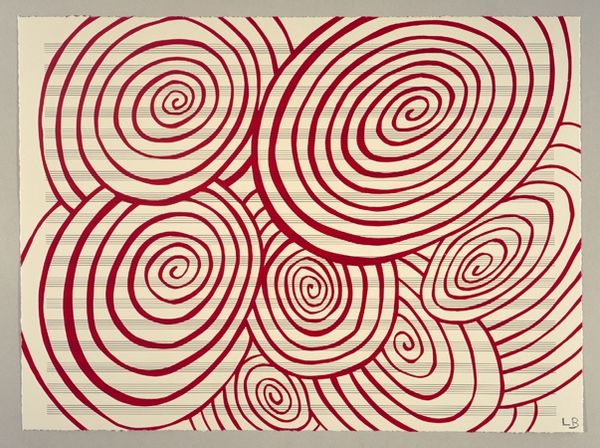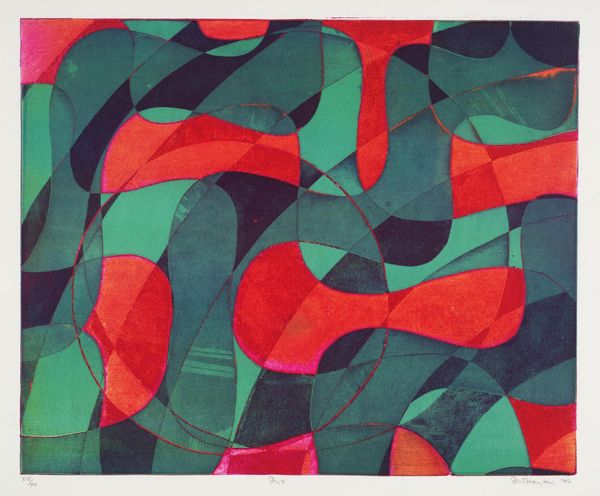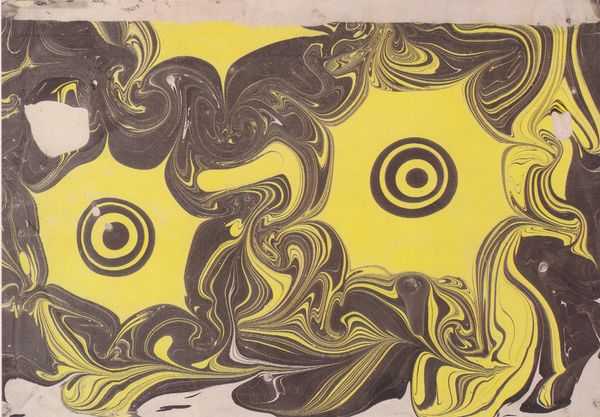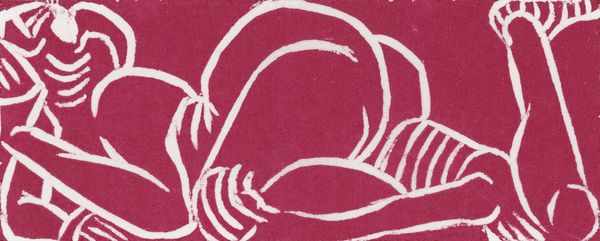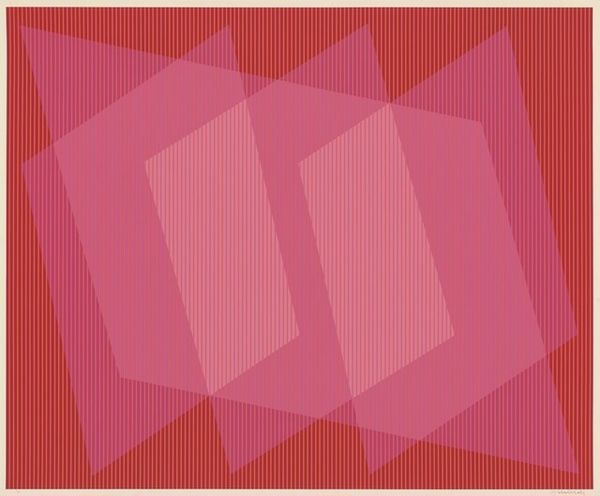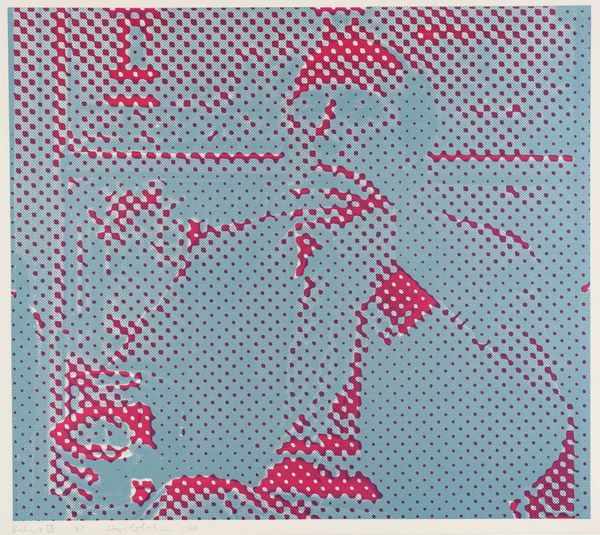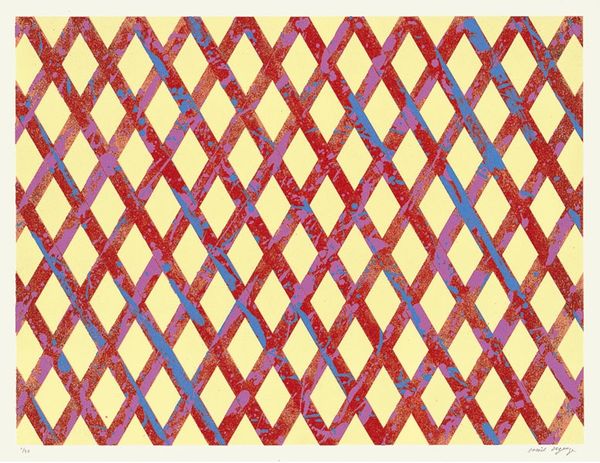
#
naturalistic pattern
#
abstract
#
abstract pattern
#
repetitive shape and pattern
#
organic pattern
#
flower pattern
#
repetition of pattern
#
vertical pattern
#
pattern repetition
#
layered pattern
#
funky pattern
Copyright: Public Domain: Artvee
Curator: Welcome. We’re standing before "calligraphic scrolls and script on salmon background," created in 1948 by Winold Reiss. Editor: My first impression is that this piece evokes a sense of playful elegance. The combination of soft colors and looping, calligraphic shapes feels both sophisticated and lighthearted. Curator: Indeed. Structurally, the repetition of the motif immediately establishes a rhythm. The script encased within curvilinear forms creates a fascinating tension between text and image. It's also impossible to ignore how Reiss handles negative space. Editor: It’s crucial to understand Reiss’s background to really engage with this piece. As a German-American artist deeply involved with the Harlem Renaissance, Reiss dedicated himself to representing the diversity of American identity. This piece, created postwar, seems to move away from his figurative portraits, maybe towards a design vocabulary suited for commercial application. Curator: Precisely. If we analyze the semiotics of the salmon background, it introduces an unexpected warmth against the relative austerity of the script. Editor: Let’s not divorce that color from the historical context. Salmon pink became trendy mid-century, often used in advertising aimed at middle-class families and suburban life. Perhaps Reiss is commenting on the rise of consumer culture after wartime austerity? Curator: A valid perspective. However, I can't dismiss the pure formalism at play. Look at how the repetitive shapes are designed with slight variations in their orientation to interrupt monotony. Editor: While understanding those micro-variations in repetition matters, the intentional repetition in pattern might engage social awareness regarding uniformity. Or maybe there are multiple “authors” when you repeat the same pattern over and over. It may nod to the ways identity shifts. Curator: That tension—between individuality and conformity— is visually captured by Reiss. Ultimately, "calligraphic scrolls and script on salmon background" prompts us to consider the subtle and multifaceted conversations artists begin with color and form. Editor: Agreed. And within a wider historical moment of great social change, design choices are rarely simple aesthetics alone, either. Thanks for opening our ears and minds!
Comments
No comments
Be the first to comment and join the conversation on the ultimate creative platform.
